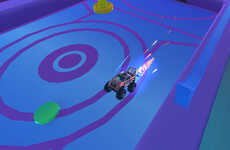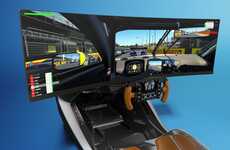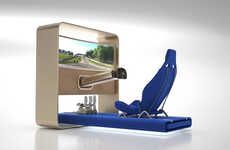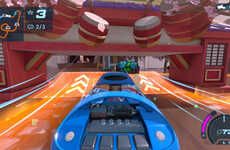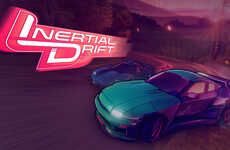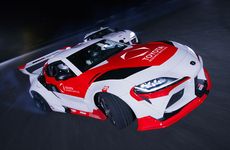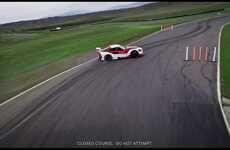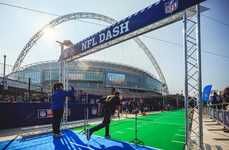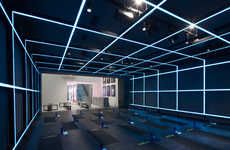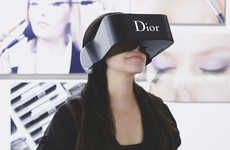
The Virtual Drift Challenge Involved Driving Cars While Immersed in 3D
Rahul Kalvapalle — May 28, 2015 — Autos
Virtual Drift is a challenge, undertaken by Formula Drift driver Matt Powers, that required high-speed real-world driving -- all whilst immersed in a 3D virtual environment via an Oculus Rift headset. While Powers was actually driving on a regular test track, he saw things like cliff drops, falling boulders, crumbling track and other spectacular game-like visual elements.
The initiative was part of the Titanium Trials series organized by motor oil company Castrol.The trials are meant to promote Castrol's premium product Castrol Edge, whilst also pushing the boundaries of what's considered possible or realistic while driving a vehicle. A custom system was required to track the car's movements in detail and simulate them in real-time in a virtual environment.
The Virtual Drift technology clearly holds huge implications for the gaming world as well as motor sports at large.
The initiative was part of the Titanium Trials series organized by motor oil company Castrol.The trials are meant to promote Castrol's premium product Castrol Edge, whilst also pushing the boundaries of what's considered possible or realistic while driving a vehicle. A custom system was required to track the car's movements in detail and simulate them in real-time in a virtual environment.
The Virtual Drift technology clearly holds huge implications for the gaming world as well as motor sports at large.
Trend Themes
1. Virtual Reality Driving Experience - The combination of real-world and virtual environments presents an opportunity for companies to create immersive driving experiences that are both thrilling and safe.
2. Augmented Reality Displays in Vehicles - Incorporating AR displays into car dashboards could provide drivers with enhanced visual information that improves safety and UX.
3. Real-time Performance Tracking - Systems that track car movements in real-time can be leveraged in various industries, such as logistics and transportation, to improve efficiency and safety.
Industry Implications
1. Gaming - By using VR/AR technology, the gaming industry can offer players more immersive experiences that combine the virtual and real worlds.
2. Automotive - Car manufacturers can incorporate VR/AR technology and real-time performance tracking systems to create safer, more engaging experiences for drivers.
3. Logistics and Transportation - Real-time performance tracking technology can be integrated into logistics and transportation industries to optimize routes and improve operations.
0.9
Score
Popularity
Activity
Freshness



